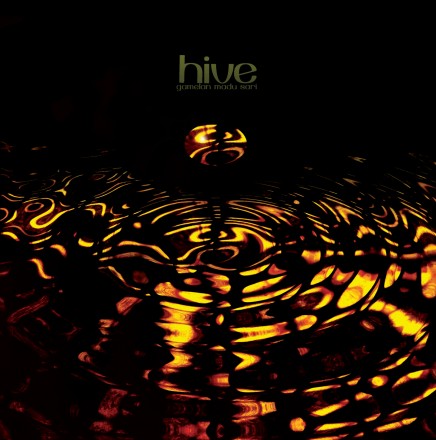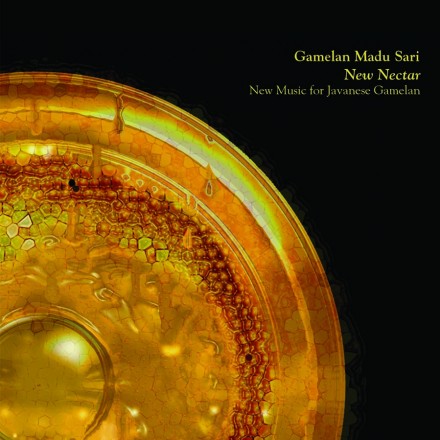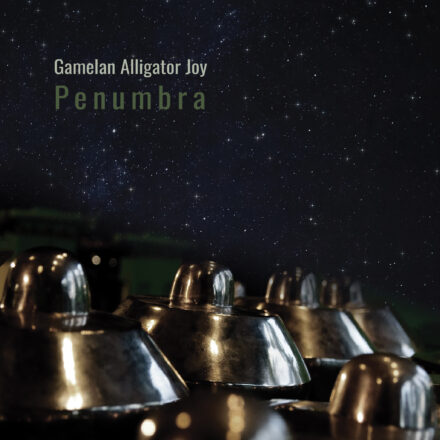Gamelan Madu Sari
Hive
SGL 2406-2Creating new music for gamelan ensembles in the west has been going on since at least the 1970s, with groups such as Gamelan Son of Lion leading the way. Gamelan Madu Sari was formed in Vancouver in 1986, the year of Expo ’86. For six months the Indonesian pavilion was alive from morning to night with gamelan music and dance; when Expo was over the Javanese gamelan, Kyai Madu Sari (The Venerable Essence of Honey), was donated to Simon Fraser University. In the years following, a core group of composer-performers came together to study new and traditional Javanese and Balinese performance practices, both here and in Indonesia, culminating in the ensemble’s first CD of new music for Javanese gamelan, New Nectar. Since then, collaborating with some of Indonesia’s top shadow play artists, Gamelan Madu Sari has created interdisciplinary multi-media shows such as Semar in Lila Maya, some of the music from which is included here.
All the pieces on Hive combine elements of the Javanese tradition with wide-ranging influences and inspirations, from morphing minimalism (Andrew Czink’s “Stream”) to the English tradition of bell pealing (Kenneth Newby’s “Symmetries”) to the fusing of polyrhythmic frameworks, Javanese lyricism and structured improvisation (Mark Parlett’s “Inquietude”). Ben Rogalsky’s wry, touching shadow-play song “From Heaven to Earth” was inspired by the old-fashioned Indonesian folk style kroncong, which developed from 16th century Portuguese music (from the time when Portugal first colonized the Spice Islands); it combines gamelan forces with mandolin, cello and string bass. Similarly, Michael O’Neill’s “Bonessongs” and Parlett’s “Inquietude” also mix different gamelan scales to approximate western tuning. Both are multi-sectional works that move between expressive poles, from introspective to explosive, their lyrics presenting contrasting perspectives on the human condition.
Sutrisno Hartana’s two pieces are the most Javanese in feeling. A master gamelan musician who has divided his time for many years between Indonesia and Canada, he extends traditional gamelan styles with innovations from the west. “Ganjil” reconceives Javanese gamelan’s basic 4/4 in 7/8 time; his gorgeous lullaby “Nang Ning Nong,” sung by his wife Anis Astuti, features his suling (flute) playing. The oldest work on the record is the Shakespeare song “Full Fathom Five” by British guest composer Alec Roth, composed in 1983 when he was studying in Java, in a haunted arrangement for a dual-voiced (female-male) Ariel. The whole record is a creative exploration of musical multiculturalism that honors its roots: educated but far from academic, it invites the listener into a sonorous landscape of truly original beauty.
This music also delights in the sheer sonic potential of gamelan instruments — the sharp strike of wood on the bronze sarons (basic melody metallophones), the plaintive reedy cry of the rebab (two-string fiddle), the resonant world of the many hanging gongs. As with traditional gamelan, much of the music is conceived as interlocking layers of sound, different instruments elaborating melody at different speeds and in different ranges. It’s often dynamic and rich in texture but can also be delicate and pared-down. (The 24-bit recording faithfully renders the music’s complexities.)
Many of the composers and performers have made names for themselves in other areas of music making. Kenneth Newby was prominent in the 90s ethno-ambient groups Lights in a Fat City and Trance Mission and is a noted audio-visual computer artist and teacher. Michael O’Neill leads and composes for his new music bagpipe ensemble Mearingstone (Ontophony, Songlines 2006), and his collaborative multi-media performance work Marathonologue was part of Vancouver’s Cultural Olympiad. Ben Rogalsky co-founded and tours in the popular string-band roots group The Breakmen. Andrew Czink is an electroacoustic composer who co-runs the Earsay label. Alec Roth led Britain’s South Bank Gamelan and has composed many works for western classical instrumental and vocal groupings. Guest singers include Seattle’s Jessika Kenney (Gamelan Pacifica, Eyvind Kang, Hossein Omoumi, Sunn O), Vancouver singer-songwriter and Independent Music Award winner Joanna Chapman-Smith, and improv/new music vocalists DB Boyko and Christine Duncan.
**** Gamelan – it’s not just for Java anymore. There are several Western groups creating new works for gamelan orchestras, but Canada’s Gamelan Madu Sari do one of the most interesting jobs of fusing the heart of Javanese gamelan music with Western sensibilities. Some of the music here was created for shadow plays, although it exists wonderfully on its own. Most interesting, though, are the vocal pieces. English words juxtaposed with gamelan can seem out of sync initially, but soon take on a soothing, dreamlike quality, especially on the shifting, lengthy ‘Bonessongs.’ There’s a variety of composers, each bringing something different to the ensemble and offering real changes from track to track. There’s plenty of time for the music to be explored (the shortest cut is over five minutes), and to introduce surprises. It’s not music for casual listening, but something to sink into, complex and inviting, and utterly absorbing.” — Chris Nickson, Allmusic.com


